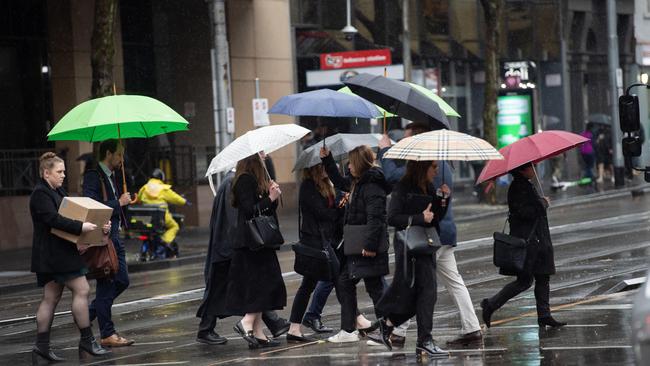QLD could experience snowfall while ‘wintry blast’ prompts weather warnings in southeast
A chilly air mass from the Arctic could bring snow to an unexpected part of Australia as temperatures plummet.
Environment
Don't miss out on the headlines from Environment. Followed categories will be added to My News.
Snow could fall as far north as Queensland from Tuesday as a chilly Arctic air mass crosses the border.
Forecasters predict light snow flurries in the Granite Belt region of southern Queensland are possible across the next three days.
The frosty air will be accompanied by enough moisture for occasional light showers that could fall as snow on high ground above 1000m.
Holding the record for Queensland’s coldest recorded temperature of -10.6C, the Granit Belt town of Stanthorpe does experience the occasional snow flurry.
The heaviest snowfall in the town this century was recorded on July 17, 2015. At least 5cm of snow coated the region almost exactly nine years ago.
Here's your weekly weather update including a look at:
— Bureau of Meteorology, Australia (@BOM_au) July 15, 2024
- wind, snow and rain in the south-east.
-mid-week cold front for the west.
Video current: 3pm AEST 15 July 2024. Latest: https://t.co/4W35o8iFmhpic.twitter.com/Puw7nNnsRc
While snow won’t fall as low as Suncorp Stadium as the Queensland Maroons take on the NSW Blues on Wednesday evening, State of Origin fans at the ground can expect a cold night with a low of 9C and maximums of 10C forecast until Thursday.
By kick-off at 8.05pm, the “feels like” temperature will likely sit at around 11 or 12C, which will drop a couple of degrees throughout the game.
Meanwhile, further south, weather warnings remain in place for Victoria and Tasmania as a “wintry blast” continues to lash southern parts of Australia, including NSW and the ACT.
A watch and act warning has been issued for the Watts River in Victoria as residents in Healesville are being urged to immediately take action and move to higher ground as moderate flooding is likely.
“The level of the Watts River at Healesville is at 3.11m, exceeding the minor flood level (2.80 metres) and rising,” the warning said.
“It is expected to peak around the moderate flood level (3.20m) early Tuesday morning 16th July.”
This Watch and Act - Prepare Now - is issued for Dandenong Creek.
— VicEmergency (@vicemergency) July 15, 2024
Act now - take action immediately to protect your life and property, and move to higher ground
More details at https://t.co/N7gZXOAmiupic.twitter.com/rNJCZE620l
Flood warnings also remain in place for the Dandenong Creek, the Latrobe River, Yarra River, Bunyip River and parts of Gippsland, Central, South West and North East forecast districts in Victoria.
Bureau of Meteorology senior meteorologist Jonathon How said southeastern regions of the country “bore the brunt” of a low pressure system driving a “cold snap” across the southeast, with strong winds hitting the areas overnight.
The highest wind gusts of 115km/h were recorded in Wilsons Promontory in Victoria and gusts of more than 100km/h were recorded across parts of Victoria and the northwestern Tasmanian coast.
Illawarra residents in NSW experienced gusts of more than 80km/h and those in the southeast of the state and regions near the ACT experienced rainfall totals of 20-40mm overnight.

The highest rainfall totals were recorded in Melbourne’s eastern suburbs and western parts of Gippsland, with more than 100mm falling in Mt Baw Baw and 60mm in Mt Dandenong.
A severe weather warning is also in place for damaging winds exceeding 90km/h for Victorians in parts of East Gippsland and North East forecast districts.
“As of this morning (Tuesday) that does extend all the way from parts of the south coast in NSW up through the Central Tablelands and that still does include the Illawarra, including places like Wollongong, Kiama and Nowra,” Mr How said.
“We are expecting those winds to ease later this morning but there is still a risk of seeing damaging winds of up to and exceeding 90km/h.”
Originally published as QLD could experience snowfall while ‘wintry blast’ prompts weather warnings in southeast




